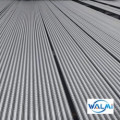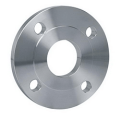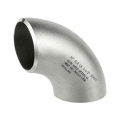Wenzhou Walmi U-shaped Stainless Steel Seamless Tube: A Performance Benchmark and Technological Innovation in Heat Exchangers
—Based on Three Sets of Product Photos and In-depth Industry Analysis
- Product Form and Process Breakthrough
As seen in the three photos, Wenzhou Walmi’s U-shaped stainless steel seamless tube exhibits a typical U-shaped structure. The tube surface is smooth and defect-free, and the gradient color from orange-red to yellow indicates that it has undergone high-temperature heat treatment. This design not only optimizes space utilization but also reduces fluid resistance and improves heat transfer efficiency through precision polishing. The two ends are fixed with clamps and bolt sealing structures to ensure zero leakage under high-temperature and high-pressure conditions, meeting the stringent sealing requirements of heat exchangers.
- Core Performance and Technical Standards
As a core component of heat exchangers, this product strictly adheres to national standards such as GB/T14976 and GB13296, as well as the international specification ASTM A213. Materials cover austenitic stainless steel series such as 304, 316L, and S30408. Its wall thickness is precisely controlled within the 3-40mm range. Through multiple hot rolling/cold drawing processes and solution heat treatment, it achieves a tensile strength ≥450MPa and a corrosion resistance improvement of over 30%. A unique self-passivating film technology (chromium content ≥12%) resists corrosion from acid, alkali, and salt media. In vaccine production sterilization scenarios, temperature fluctuations are controlled within ±0.5℃, ensuring stable biological activity.
III. Heat Exchanger Application Scenarios and Advantages The U-tube heat exchanger, with its single-tube sheet structure and free expansion and contraction characteristics, perfectly solves the problem of shell-tube temperature difference stress, offering superior thermal compensation capabilities compared to floating head designs. Its advantages are significant in petrochemical, nuclear power, and refrigeration fields:
High-efficiency heat transfer: The heat transfer coefficient of the steam-water heat exchanger is twice that of plate heat exchangers, the heat exchange area is reduced by 40-60%, and energy consumption is reduced by 20%;
High temperature and high pressure resistance: Suitable for supercritical CO₂ power generation systems (1200℃ operating conditions), the ceramic-based composite coating extends the service life to 20 years;
Anti-fouling design: The smooth inner wall reduces scale accumulation, and combined with online chemical cleaning + ultrasonic technology, the scale removal rate reaches 95%;
Modular installation: Standard module combination improves installation efficiency by 70% in space-constrained scenarios such as offshore platforms.
- Industry Cases and Technological Innovation Wenzhou Walmiproducts have been applied to U-tube heat exchangers in companies such as Binglun and Gaoke, with an average monthly supply of 50 tons. In the oil refinery case, by optimizing the baffle spacing to 1.5 times the tube diameter, the shell-side short-circuit flow rate was reduced by 30%, and the heat transfer efficiency was improved by 25%. Laser welding technology controls the welding defect rate to below 0.1%, and surface aluminizing treatment solves the erosion problem of U-shaped bends. Integrating fiber optic sensors and digital twin technology enables real-time monitoring of stress and scale buildup, shortening predictive maintenance cycles to three months, aligning with industrial energy conservation and emission reduction requirements under the “dual carbon” target.
Conclusion: Wenzhou Walmi U-shaped stainless steel seamless tubes, with their precision manufacturing processes, stringent standard certifications, and innovative application technologies, have become the preferred solution for heat exchangers under high-temperature and high-pressure conditions. Their corrosion resistance, scale resistance, and efficient heat transfer characteristics not only improve equipment reliability but also, through modular design and intelligent monitoring, drive the industrial heat exchange field towards greener and more efficient upgrades. In the future, with the integration of materials science and digital technology, the application boundaries of U-shaped tubes will continue to expand, playing a more crucial role in energy efficiency and industrial energy conservation and emission reduction.







